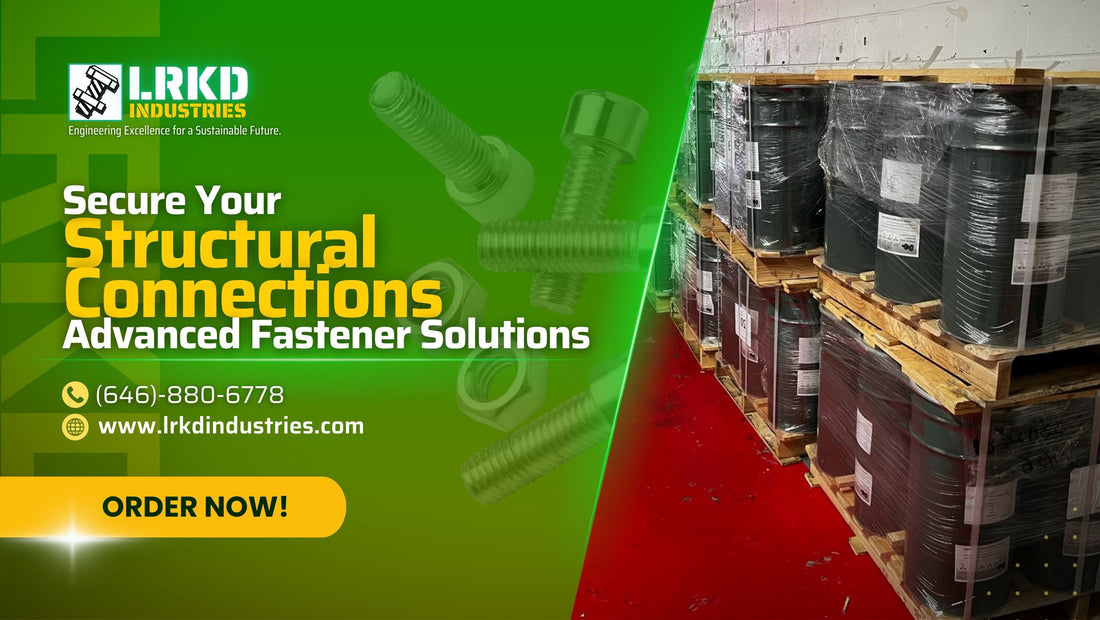The Research Council on Structural Connections (RCSC) has established guidelines for the storage of structural fasteners, emphasizing the importance of "protected storage." This practice involves keeping fastener components in sealed containers within a sheltered environment. This is particularly crucial for heavy-hex structural bolts (like ASTM A325 and A490), tension control bolts (like F2280 and F1852), and their corresponding nuts and washers.
The primary goal of protected storage extends beyond mere inventory control or theft prevention. It's fundamentally about preserving the integrity of these fasteners, ensuring they remain in a state as close as possible to their original manufactured condition until they are installed.
Exposure to the elements, moisture, dust, and other contaminants can compromise the performance of these fasteners. Corrosion, for example, can weaken the bolts and reduce their load-bearing capacity. Damage to the threads can also affect the tightening process and the overall integrity of the connection.
By implementing protected storage practices, construction professionals can mitigate these risks and ensure that the structural fasteners used in their projects meet the required standards for safety and performance. This not only safeguards the integrity of the structure but also protects the lives of those who depend on it.
Why is it important to know what protection means?
The efficacy and performance of structural components, and the realization of accurate pretensioned tensions, are critically dependent on safeguarding structural bolts, nuts, and washers from environmental exposure that could compromise their as-received condition. These fasteners are designed and manufactured to exacting specifications, and any alteration to their surface finish, dimensions, or material properties can have significant repercussions on their load-bearing capacity, corrosion resistance, and overall functionality.
Exposure to contaminants such as dirt, dust, rust, or other foreign substances can impede the proper seating and alignment of the fasteners, leading to uneven load distribution, stress concentrations, and potential failure. Moreover, the presence of rust or corrosion can weaken the material, reduce the effective cross-sectional area, and accelerate further deterioration, compromising the structural integrity of the assembly.
To ensure the reliability and longevity of bolted connections, it is imperative to implement stringent measures to protect these critical components from environmental degradation. This includes proper storage in clean, dry conditions, careful handling during transportation and installation, and thorough inspection and cleaning prior to assembly. Any fasteners that exhibit signs of damage, contamination, or corrosion should be rejected and replaced to avoid jeopardizing the safety and performance of the structure.
How do you protect the fasteners?
The best way to protect your equipment is to store it indoors in a protected shelter, building, or weatherproof Conex-type container. If those options aren't available, you can use portable, weatherproof job site storage boxes; there are many manufacturers that make them.
Whatever you do, don't just cover your equipment with a tarp. That may actually cause more damage because condensation can form under the tarp and drip back onto the equipment.
Bolt kegs, the containers that parts are shipped in, are an important consideration for proper storage. Traditional metal kegs with seams can allow moisture to seep in, so it's crucial to keep parts in weather-tight containers.
Rigid Polyethylene Kegs offer a superior solution. These kegs have a rubber gasket under the lid to create a weather-resistant seal, and their lids are easier to remove and replace. They also have other advantages, including tamper-proof lids, reusability, smooth edges, and built-in handles. These kegs are also 100% recyclable.
What action should you take if parts become dirty or rusty?
Fastener components can be cleaned and lubricated by either the fabricator or the erector, according to the RCSC. The exceptions to this are ASTM F1852 and F2280 twist-off-type tension-control bolt assemblies (Section 2.7) and some alternative-design fasteners (Section 2.8).
Because the acceptability of their installation depends upon specific lubrication, ASTM F1852 and F2280 twist-off-type tension-control bolt assemblies and some alternative design fasteners must be lubricated by the manufacturers.
After cleaning and lubrication, the fastener assemblies must be retested to verify that pretensioned loads can be achieved by the specified tightening method.
Keep your fastener components protected for a successful project. Specification for Structural Joints Using High-Strength Bolts, August 1, 2014 can be downloaded for free on the RCSC website boltcouncil.org
Structural Fastening Expertise
Secure your structural connections with confidence! LRKD Industries delivers advanced fastener solutions designed to meet the demands of modern construction. From seismic-rated bolts to high-strength assemblies, we offer a full range of fastening systems that ensure durability, compliance, and performance across a variety of steel structures.
This service is perfect for engineers, fabricators, and project managers who prioritize reliability, code-compliant specs, and seamless installation—all while saving time on product sourcing and technical matching.
Contact LRKD Industries now to elevate your fastening systems!
👉 Submit your requirements today for a FREE consultation and product compatibility check.
📍 Address: 98 N Industry CT, Deer Park, NY 11729, US
📞 Phone: +1 646-880-6778
📧 Email: info@lrkdindustries.com
We also provide digital file conversions into ".dwg" format, fully compatible with Tekla and other structural modeling platforms—ensuring smooth coordination from design to build.
For more information about our fastener products and systems, click here.
When every bolt counts, precision isn’t optional—it’s mission-critical.


